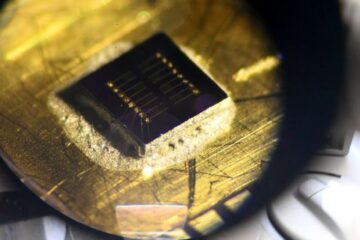Kent awarded £322k for study into the electro-magnetic architecture of buildings

Their research will ultimately improve wireless network access in offices and also security in prisons where the illicit use of mobile phones is widespread.
The project, which begins in January 2007, is in collaboration with the universities of Manchester (who received £228k) and Auckland (New Zealand), and the Police Information Technology Organisation which has pledged a further £30,000. This will bring the total funding for the project to £581,000 over three years.
Dr Batchelor explained: ‘Our research will involve integrating frequency selective surfaces into building walls. These surfaces can either pass or block certain radio frequencies meaning that transmissions can be contained in, or passed out of sealed rooms. This has promising implications for ‘reusing’ radio signals in adjacent rooms and increasing the total number of wireless channels available, or conversely, blocking signals completely and stopping people from making unauthorised mobile phone calls. Modern architectural regulations are aimed only at structural and aesthetical issues, while ignoring the problem of controlling access to an ever expanding wireless infrastructure.’
Dr Batchelor is a Senior Lecturer in Electronic Engineering with research interests in the design and modelling of multi-band antennae for personal and mobile communication systems, and reduced size frequency selective structures for incorporation into smart buildings for control of the radio spectrum. Professor Parker is Professor Emeritus of Radio Communications, with research interests in microwave antennae, frequency selective surfaces for microwave and millimetre wave multiband antennae, radomes, and the electromagnetic architecture of buildings, particularly time-dependent and frequency-dependent screening for secure buildings.
Media Contact
More Information:
http://www.kent.ac.uk/newsAll latest news from the category: Architecture and Construction
Newest articles

Sea slugs inspire highly stretchable biomedical sensor
USC Viterbi School of Engineering researcher Hangbo Zhao presents findings on highly stretchable and customizable microneedles for application in fields including neuroscience, tissue engineering, and wearable bioelectronics. The revolution in…

Twisting and binding matter waves with photons in a cavity
Precisely measuring the energy states of individual atoms has been a historical challenge for physicists due to atomic recoil. When an atom interacts with a photon, the atom “recoils” in…

Nanotubes, nanoparticles, and antibodies detect tiny amounts of fentanyl
New sensor is six orders of magnitude more sensitive than the next best thing. A research team at Pitt led by Alexander Star, a chemistry professor in the Kenneth P. Dietrich…





















